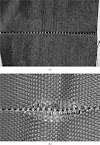Departments in Garment Industry
Garment industry is run by many departments working together. This departments works on respective operations and makes contribution in production of a garment. Their are different sections for each department in the industry. Following are the main departments working in the garment industry –
1. Merchandising
Merchandiser is mediator person between buyer and manufacturers. In this department their are many types of merchandiser e.g. production merchandiser, export merchandiser, fashion merchandiser, retail merchandiser, etc. Each merchandiser has it’s unique responsibility.
Main responsibilities of merchandising
• Get the orders from buyer.
• Get the approval from buyer.
• Maintain the good relationship with buyer by maintaining communication with buyer.
• Track the material throughout the production process and keep informing the buyer.
2. Sampling
This is starting process for executing any order. Sampling department deals with sample preparation to get the approval from buyer. Buyer confirms the order and gives green signal for production process only if samples satisfy all the requirements. Sampling department prepare samples with reference of tech pack given by the buyer.
Main responsibilities of the sampling department –
• Creating samples for approval.
• Recreation of samples if it is rejected or some changes required.
• Finalize the patterns used for preparing approved samples, so that same patterns will be used for marker planning.
3. CAD
Computer Aided Design (CAD) is computer aided procedure for preparing marker. Marker is nothing but the arrangement of patterns in well manner so that fabric can be used as much as possible. Good marker planning is very good sign of proper utilisation of fabric with less waste.
Main responsibilities of CAD department –
• Preparing marker planning.
• Improve marker efficiency.
• Examine the inspection report carefully for shrinkage percentage, shade variation, etc.
4. Fabric and Trims
Fabric and trims department are use to store the required amount of quantity of fabric and trims for upcoming production. Their are separate stores for fabric and trims. Both the stores receive the material as per the order quantity. This department supplies required quantity of fabric to the cutting department. The inspection report is prepared by this department and send to the CAD department for marker planning.
Main responsibilities of fabric and trims department –
• Receive the material as per order quantity.
• Perform inspection for every material and make report of it.
• Feed the information allocation of material in computer.
• If the material does not pass the requirements, that lot must be rejected.
• Issue the fabric and trims as per the requirement.
• Maintain the record of supply.
5. Cutting
Spreading and cutting operation is done after marker is ready. Cutting department use spreading machine, cutting machine like straight knife, round knife, band knife or automatic cutter. As per the marker planning, cutting department receive the fabric from fabric store and starts to lay according to it. Number of lays, length of the lay is mentioned in marker planning. After spreading, cutting is done. Later the cut pieces are provided to the respective production line.
Main responsibilities of cutting department –
• Receive the fabric from fabric store.
• Making of lays of fabric as per instructions.
• Lay the fabric few hours prior to cutting for the relaxation purpose.(If required).
• After cutting, cut pieces should be issue to the respective production line.
6. Sewing
In this department cut pieces are stitch together to create a garment. Here sewing machines are placed in sequence for the easy flow of work. After some operations, inspection is done to avoid carrying defect further. After garment is constructed, it is send to the finishing department.
Main responsibilities of sewing department –
• Receive the cut pieces from cutting machine.
• Send pieces back to the cutting department if cutting is not done proper.
• Inspect every critical operations to maintain the quality of the garment.
• Send ready garments to the finishing department.
• Maintain the record of constructed garments, WIP, number of alterations, etc.
7. Finishing
Finishing department gives the finishing touch to the garments like ironing, removing stains, price tag attaching, folding and packing. Packed pieces is then send to the warehouse for storage.
Main responsibilities of finishing department –
• Make garment ready for shipment.
• Final inspection should be done to ensure the quality of product.
• Record the number of pieces packed and send to the warehouse.
• If any defect is found, then return that piece to the respective section of production line.
8. Warehouse
Warehouse stores the finished goods and ship it to the buyer. Warehouse supplies the goods for shipment and track it until it reaches to the buyer.
Main responsibilities of warehouse –
• Provide safe storage for finished goods.
• Maintain the record of stored and delivered goods.
• Ensure the safe shipment.
• Tracking of goods until it reaches to the buyer.












0 Comments
If you have any doubts, please don't hesitate to ask